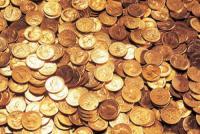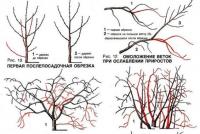History of Crimea from ancient times. History of Crimea: whose peninsula is actually
We are accustomed to approach the concept of " Crimea»As the name of the place where you can have a great vacation summer days, have a good rest on the seashore, making a couple of trips to attractions located nearby. But if you approach the issue globally, look at the peninsula from a distance of centuries and knowledge, then it becomes clear that the Crimea is a unique historical and cultural territory, striking with antiquity and a variety of natural and "man-made" values. Numerous crimean monuments of culture reflect the religion, culture and historical events of different eras and nations. Story the peninsula is the interweaving of the West and the East, the history of the ancient Greeks and the Golden Horde Mongols, the history of the birth of Christianity, the appearance of the first churches and mosques. For centuries, people lived here, fought with each other, concluded different nations and trade treaties, different settlements and cities were built and destroyed, civilizations appeared and disappeared. Inhaling the Crimean air, besides the notorious phytoncides, you can feel in it a taste of the legends about life. amazons, Olympic gods, Tauris, Cimmerians, Greeks…

The natural conditions of the Crimea and the geographical location, favorable for life, contributed to the fact that the peninsula became the cradle of humanity. Primitive Neanderthal people appeared here 150,000 years ago, attracted by the warm climate and the abundance of animals, which were their main food base. Almost in every Crimean museum one can find archeological finds from grottoes and cavesthat served as natural refuges for primitive man. The most famous parking primitive man:
- Kiik-Koba ( Belogorsk district);
- Staroselie (Bakhchisarai);
- Chokurcho (Simferopol);
- Wolf Grotto (Simferopol);
- Ak-Kaya (Belogorsk).
Cimmerians

If before the first millennium BC, historical data only lifts the veil from different periods human development, the information about the later time allows us to speak about specific cultures and tribes of the Crimea. In the V century BC, Herodotus, the ancient Greek historian, visited the Crimean shores. In his writings, he described the local lands and the peoples inhabiting them. It is believed that among the first peoples who lived in the steppe part of the peninsula in the XV-VII centuries BC, were cimmerians. Their warlike tribes were driven away from the Crimea in the 4th - 3rd centuries BC by no less aggressive Scythians and were lost in the vast expanses of the steppes of Asia. Only ancient names remind of them:
- Cimmerian walls;
- Kimmerik.
Tauris
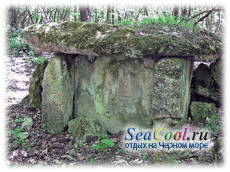
Mountain and foothill Crimea in those days inhabited the tribes tauri, distant descendants of the Kizil-Koba archaeological culture. In the descriptions of the ancient authors of the brand look bloodthirsty and cruel. Being skilled sailors, they hunted down by piracy, robbing ships passing along the coast. Prisoners were thrown into the sea from a high cliff from the temple, sacrificing to the goddess Deva. Disproving this information, modern scientists have found that the Tauri were engaged in hunting, collecting mollusks, fishing, farming and raising cattle. They lived in huts or caves, but built fortified shelters to protect them from external enemies. Taurus fortifications found on the mountains: Cat, Uch-Bash, Castell, Ayu-Dag, on Cape Ay-Todor.
One more traces of Tauri - numerous burials in the dolmens - stone boxes, consisting of four flat plates put on an edge and covered with the fifth from above. One of the unsolved mysteries about the brands - the location of the cliff with the temple of the Virgin.
Scythians
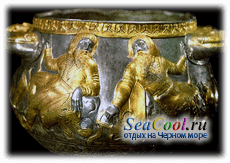
In the VII century BC, Scythian tribes came to the steppe part of the Crimea. In the IV century BC, Sarmatians push aside scythians on the lower Dnieper and Crimea. At the turn of the IV-III centuries BC, a Scythian state was formed on this territory, the capital of which was Naples Scythian (in its place is the modern Simferopol).
Greeks
In the VII century BC, a string of Greek colonists stretched across the Crimean shores. Choosing a place convenient for living and navigation, the Greeks based on them the city-states - "policies":
- Theodosius;
- Panticapaeum-Bosporus (Kerch);
- (Sevastopol);
- Mirmeky;
- Nymphaeus;
- Tiritaka
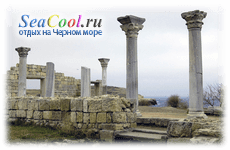
The emergence and expansion of the Greek colonies served as a serious impetus for the development of the Northern Black Sea region: political, cultural and trade relations between the local population and the Greeks. The indigenous inhabitants of Crimea learned to cultivate the land in more perfect ways, they began to breed olives and grapes. The influence of Greek culture on the spiritual world of the Scythians, Taurians, Sarmatians and other tribes that came into contact with her was enormous. However, the relationship between neighboring nations evolved uneasy: peaceful periods were replaced by years of war. Therefore, all the Greek policies were protected by sturdy stone walls.
IV c. BC was the time of the foundation of several settlements in the west of the peninsula. The largest of them are Kalos-Limen (Black Sea) and Kerkinitida (Evpatoria). At the end of the 5th century BC, people from the Greek Heraclea founded the policy Chersonese (modern Sevastopol). One hundred years later, Chersonese became a city-state independent of the Greek metropolis and the largest polis of the Northern Black Sea region. In its heyday, it was a powerful port city, surrounded by the walls of the cultural, handicraft and commercial center of the southwestern part of Crimea.
Around 480 BC, independent Greek cities united to form Bosporan kingdomwhose capital became the city of Panticapaeum. A little later Theodosius joined the kingdom.
In the 4th century BC, the Scythian king Atey united the Scythian tribes into a strong state that owned the territory from the Dniester and the Southern Bug to the Don. From the end of the 4th century BC and especially in the 3rd century BC scythians and the brands that were under their influence exerted strong military pressure on the policies. In the III century BC, Scythian villages, fortifications and cities appeared on the peninsula, including the capital of the kingdom - Scythian Naples. At the end of the II century BC, besieged by the Scythians, Chersonesos turned to Pontic kingdom (located on the southern shore of the Black Sea) for help. The troops of Ponta lifted the siege, but at the same time captured Theodosius and Panticapaea, after which both the Bosporus and Chersonesus were part of the Pontic kingdom.
Romans, Huns, Byzantium
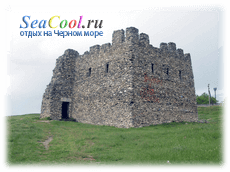
From the middle of the 1st century to the beginning of the 4th century AD, all the Black Sea coast (and Crimea-Tavrica as well) was in the sphere of interests of the Roman Empire. Stronghold of the Romans on Tavrika became Chersonesos. In the 1st century, Roman legionnaires built the Kharaks fortress on Cape Ai-Todor and connected it with roads to Chersonesos, in which the garrison was located. The Roman squadron was located in the Chersonese harbor.
In 370, the hordes of the Huns came to the Crimean lands. They wiped out the Bosporan kingdom and the Scythian state, destroyed Chersonese, Panticapaeum and Scythian Naples. After the Crimea, the Huns went to Europe, carrying the destruction of the great Roman Empire. In the IV century, the Roman Empire was divided into Western and Eastern (Byzantine). The southern part of Tavrika entered the sphere of interests of the Eastern Empire. The main base of the Byzantines in the Crimea became Chersonese, which became known as Kherson. This period was the time of penetration of Christianity to the peninsula. According to church legend, Andrew the First-Called became his first herald. The third bishop of Rome, Clement, exiled in Kherson in 94, also actively preached the Christian faith. In the 8th century, an iconoclasm movement appeared in Byzantium: all the images of saints were destroyed - on icons, in temple paintings. The monks fled from persecution on the outskirts of the empire, including in the Crimea. In the mountains of the peninsula, they founded cave monasteries and temples: 
- Kachi-Kalon;
- Chelter;
- Ouspensky;
- Shuldan.
At the end of the 6th century, a new wave of invaders, the Khazars, the ancestors of the Karaites, poured into the peninsula. They occupied the whole Crimea, except for Kherson. In 705, Kherson recognized the Khazar protectorate and separated from Byzantium. In response, Byzantium sent a punitive fleet with a small army on board in 710. Kherson fell, and the Byzantines treated its inhabitants with unprecedented cruelty. But as soon as the imperial troops left the city, he rebelled: united with the Khazars and part of the army that had changed the empire, Kherson seized Constantinople and put its emperor at the head of Byzantium.
Slavs, Mongols, Genoese, Theodoro principality
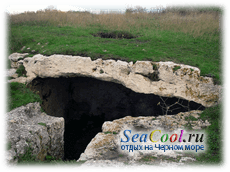
In the 9th century, a new force actively intervenes in the course of the Crimean history - slavs. Their appearance on the peninsula coincided with the decline of the Khazar state, finally defeated in the tenth century by Prince Svyatoslav. In 988 - 989, Kherson was captured by Prince Vladimir of Kiev. Here he adopted the Christian faith.
In the XIII century, the Tatar-Mongols of the Golden Horde invaded the peninsula several times, plundering the cities thoroughly. From the middle of the XIII century, they began to settle on the territory of Tavrika. At that time, they captured Solkhat and turned it into the center of the Crimean yurt of the Golden Horde. He received the name Kyrym, subsequently inherited by the peninsula.

During these years, Orthodox appeared in the mountains of Crimea. principality of Theodoro with the capital in Mangup. The Genoese had controversial issues with the Principality of Theodoro about the ownership of the disputed territories.
Turks
At the beginning of 1475 a fleet appeared at Kafa Ottoman Empire. Well-fortified Kafa withstood the siege for only three days, after which she surrendered to the mercy of the winner. By the end of the year turks captured all coastal fortresses: the dominion of the Genoese in the Crimea was over. Mangup lasted the longest and surrendered to the Turks only after a six-month siege. The invaders brutally treated the captured Theodorians: the city was ravaged, most of the inhabitants were killed, and the survivors were taken into slavery.
Crimean Khan became a vassal Ottoman Empire and the conductor of the aggressive policy of Turkey towards Russia. Raids on southern lands Ukraine, Poland, Lithuania and Russia have become permanent. Russia sought to protect its southern frontiers and gain access to the Black Sea. Therefore, she repeatedly fought with Turkey. The war of 1768 - 1774 was unsuccessful for the Turks. In 1774, between the Ottoman Empire and Russia was concluded Kuchuk-Kaynardzhiysky Treaty about the world, which brought independence to the Crimean Khanate. Russia received in the Crimea the fortress of Kin-bourn, Azov and the city of Kerch, along with the fortress Yeni-Kale. In addition, now Russian merchant ships have gained free access to navigation in the Black Sea.
Russia

In 1783 Crimea was finally attached to Russia. Most Muslims left the peninsula and moved to Turkey. The edge has fallen into disrepair. Prince G. Potemkin, the governor of Taurida, began to relocate here retired soldiers and serfs from neighboring areas. So on the peninsula there were first villages with Russian names - Izyumovka, Mizanka, Clean... This prince’s move proved to be true: the economy of the Crimea began to develop, agriculture was revived. The city of Sevastopol, the base of the Black Sea fleet of Russia, was laid in an excellent natural harbor. Near the Ak-Mosque, a small town, Simferopol was built - the future "capital" of the Tauride province.
In 1787, Empress Catherine II visited Crimea with a large retinue of high-ranking officials from foreign countries. She stayed in specially built for this case traveling palaces.
Eastern war
In 1854 - 1855, Crimea became the scene of another war, called the Eastern. In the autumn of 1854, the United Army laid siege to Sevastopol. France, England and Turkey. Under the guidance of Vice-admirals PS Nakhimov and V.A. Kornilov defense of the city lasted 349 days. In the end, the city was destroyed to the ground, but at the same time glorified by the whole world. Russia lost this war: in 1856, an agreement was signed in Paris prohibiting the presence of military fleets in the Black Sea and in Turkey and Russia.
Health resort Russia
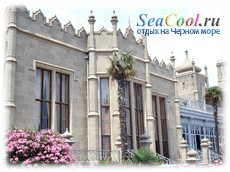
In the middle of the XIX century, the doctor Botkin recommended the royal family to acquire the estate of Livadia, as a place that has an extremely healthy climate. This was the beginning of a new, resort era in the Crimea. Villas, manors, palaces that belonged to the royal family, rich landowners and industrialists, and court nobility were built along the whole coast. For several years, the village of Yalta has become a popular aristocratic resort. The railways, which connected the largest cities of the region, further accelerated its transformation into a resort dacha health resort of the empire.
At the beginning of the twentieth century, the peninsula belonged to the Tauride province and was economically agrarian region with several industrial cities. These were mainly Simferopol and port Kerch, Sevastopol and Theodosius.
Soviet power was established in the Crimea only in the fall of 1920, after the German army and Denikin's troops were expelled from the peninsula. A year later, the Crimean Autonomous Socialist Republic was formed. Palaces, cottages and villas were given to the people's sanatoriums, where collective farmers and workers from all over the young state were treated and rested.
The Great Patriotic War
During the Second World War, the peninsula courageously fought with the enemy. Sevastopol repeated his feat, surrendering after a 250-day siege. Pages of the heroic chronicle of those years are full of such names as "The fiery land of Eltigen", "Kerch-Feodosia operation", "The feat of the partisans and underground fighters"... For their courage and resilience, Kerch and Sevastopol were awarded the title of hero-cities.
February 1945 gathered in the Crimea the heads of allied countries - USA, UK and USSR - at the Crimean (Yalta) Conference in the Livadia Palace. During this conference, decisions were made to end the war and establish a postwar world order.
Postwar years

Crimea was liberated from the occupiers in early 1944, and immediately began the restoration of the peninsula - industrial enterprises, rest homes, sanatoriums, agricultural facilities, villages and cities. The black page in the history of the peninsula of that time was the expulsion from its territory of the Greeks, Tatars and Armenians. In February 1954, by the decree of N.S. Khrushchev Crimea region was transferred to Ukraine. Today, many believe that it was a royal gift ...
In the 1960s – 1980s, the growth of the Crimean agriculture, industry, and tourism reached its peak. Crimea received the semi-official title of an all-union health resort: 9 million people rested at its resort and recreation facilities every year.
In 1991, during the putsch in Moscow, the Secretary General of the USSR, MS, was arrested. Gorbachev at the state cottage in Foros. After the collapse of the Soviet Union, Crimea became Autonomous Republic, which became part of Ukraine. In the spring of 2014, after the all-Crimean referendum, the Crimea peninsula seceded from Ukraine and became one of the constituent entities of the Russian Federation. Started modern history of Crimea.
We know Crimea as a republic of rest, sun, sea and fun. Come to the Crimean land - let's write the history of this our resort republic together!
Now, when fanfare is heard in the Russian media with full force regarding the “return to Moscow of the primordially Russian land of Crimea and the restoration of historical justice,” it will be especially relevant to look at the degree of this “primordiality”. And then curious things will turn out - on the lands of the "peninsula of sticking", if we proceed from the "historical rights", more than a dozen nations and peoples can claim. It even excludes those who have not survived to date, even in the form of distant heirs.
Most of all in relation to the peoples inhabiting the Crimea, Lermontov’s lines are suitable: "Everything flashed before us - everyone was here ..."
The first historical references to the “Pearl of the Black Sea” were given by the ancient Greeks. It is their chroniclers who mention the Tauri tribe, by whose name the poetic and romantic name of this land, Tavrida, is still used today.
Since the 12th century BC, Cimmerians came to the peninsula. In those days - a very militant people, and not only in the Black Sea region. However, after half a thousand years, the former formidable warriors became decrepit, degenerated, giving way to the Scythians - this happened in the 7th century.
Mountain and steppe Crimea - different conditions, different inhabitants
Just at this period, the following geopolitical pattern becomes noticeable on the peninsula - the difference between the values of the steppe and mountainous Crimea, especially its coast. Seaside zones at this time strongly colonized by immigrants from Greece. They built cities, were engaged in crafts, relatively high-tech agriculture - the same wine production, for example.
But the steppe zone with its "risky agriculture" because of the arid climate "advanced" settlers was not particularly needed - there and this or that nomadic people settled, getting excellent pastures for their cattle. Since then, for many hundreds of years, the “steppe inhabitants” and “citizens” have lived relatively peacefully.
On the eve of the Roman conquest at the turn of our era on the territory of the Crimea there were two main kingdoms - the Bosporus and Pontic - not counting the Greek cities-policies on the coast. However, the Romans also did not know what to do with the steppe part of the territory - so even after their arrival there lived who wanted. And, of course, he had enough strength not to give in to the next applicant. So, consistently, Germanic tribes settled in the Crimea ready (which destroyed the Scythian state in the 3rd century), then the Huns (whose descendants are modern Hungarians).
With the fall of the Western Roman Empire in the 5th century, Crimea, in the main, became owned by Byzantium. But she was not too opposed when the Khazars occupied the steppe areas of the peninsula in the 7th century, which at that time had a rather powerful state - the Khazar Kaganate. And in some periods, the Romanian empire retained control over perhaps Chersonesus - located near present-day Sevastopol.
Crimea in the era of Kievan Rus
In the 10th century, Slavs began to play a prominent role in the Crimean history. Starting with the very "Oleg's thing", which Pushkin intended to "take revenge on the foolish Khazars," which he did with very great efficiency. However, the last nail in the coffin of the Kaganate was hammered by the legendary Prince Svyatoslav, the father of Vladimir, who baptized Russia, who founded the Tmutarakan principality located on the territory of modern Taman and the Kerch Peninsula.
It must be said that our ancestors chose their expansion site very successfully - at times Tmutarakan was compared to Constantinople in terms of the turnover of its seaport! Oriental merchants brought silk, incense, spices to Europe through this city — weapons, hides, and other “Western” goods came back. But the owners of the said principality, which has become synonymous with terrible remoteness in modern language, received very good profits.
However, steppe Crimea, again, the Russians did not occupy. Why - if their state could not master the lands to the south even of Pereyaslav, try to settle on exactly the same, only more arid places, hundreds of kilometers from the capital? So, after the defeat of the Khazars in the Northern Black Sea region (and most of the Crimea) occupied the Pechenegs. Which at the turn of the 11th-12th centuries changed the Polovtsy.
After the crushing of Constantinople by the crusaders in 1204 - when the actual Roman Empire was divided into several parts - Venetians, then the Genoese, strenuously organized their trading cities in the Crimea.
Could not pass by the "pearls of the Black Sea" and the Mongol-Tatars - during their invasion of Russia and Europe in 1237-40. Moreover, they were very angry with the Polovtsy - and could not deny themselves the pleasure of inflicting a genocide (and, alas, just another on the Crimean land). However, neither they managed to conquer the cities-colonies of the overseas powers, nor the principality of Theodoro.
The relatively peaceful coexistence of the above peoples was discontinued in 1475 - the landing of a powerful Turkish landing force. Within a short time, the bellicose Ottomans, who had captured Constantinople 22 years before, had attached to themselves almost all the port cities of the Crimean coast. The Genoese (who had) ran on ships to their home; The Theodorites were mainly sold into slavery; the surviving Greeks and Armenians were left to live without their own statehood. But the Crimean Khanate, which became independent from the Golden Horde in 1441, adopted the "protectorate" of the Ottoman ports. Her sultans now claimed khans, and appointed judges to serve as "caliphs" (masters of all orthodox).
Crimean Khanate - a superpower of the Middle Ages
In 1571, the Crimean Khan seized half of Muscovy, burned Moscow itself. Ivan the Terrible, in spite of his nickname, then trembled with fear, fleeing to Novgorod, promising the most tasty land of his power to the winner for the sake of peace. Moscow right up to 1680 was forced to pay official tribute to Crimea.
The role of the Crimean cavalry in the struggle of Ukraine for independence under Bogdan Khmelnytsky is also known. Roughly speaking, the great hetman won victory after victory over the Poles, when Khan was his ally. And, on the contrary, he suffered defeat after defeat, when the latter kept neutrality.
In fairness, it should be noted that the Zaporozhye Cossacks often came to the aid of their Tatar allies - especially when they started internecine civil wars for supreme power. This is especially true of the famous hetmans Sagaidachny and Doroshenko, who labored in the first third of the 17th century.
Russia is the "grave-digger" of the Crimean Tatar statehood
In the 18th century began the decline of the Crimean Tatar statehood. The Russian Empire was gaining strength to this. Thus, in 1736-38, the peninsula was conquered by field marshal Minich and Lassi troops - resistance was "drowned in blood" in the literal sense of the word. The corpses of the Tatars were so many that dangerous epidemics began, in fact, which made the Russians go home.
And then came a period of internal instability, civil wars between representatives of the ruling dynasty of the Girey for the Khan's throne. The support of the Crimea of Turkey in the war of the 60-70s of the 18th century cut down the peninsula’s population completely.
In 1776, on the orders of Catherine, Suvorov organized the voluntary-compulsory resettlement of Orthodox Greeks and Armenians to the territory of present-day Ukraine. However, there were only 31 thousand of them left then. Tatar, as of 1783, when Russia finally annexed the Crimea after the abdication of his last Khan, there were only 60 thousand. So, the peninsula then represented a frank semi-desert.
It began to settle and immigrants from the Russian Empire - including the Ukrainians. What played its role in the demographic indicators of the last peaceful 1913 - 200 thousand Crimean Tatars, with half a million of all the inhabitants of the Crimea.
Ownership of the Crimea - who is the last in line?
During the Civil War, the rulers of the Crimea began to replace each other with kaleidoscopic speed. There were also the "hetmans" of Skoropadsky under the actual protectorate of Germany, and the "reds", and the army of Baron Wrangel ... All this "leapfrog" ended in 1920 - after the storming of Perekop and the seizure of the peninsula by the Frunze troops, with the subsequent entry into the RSFSR.
However, after 22 years, another seizure followed, but not for long, by the troops of Nazi Germany. The only peaceful "change of jurisdiction" was the transfer of the Crimean region by Moscow in favor of the Ukrainian SSR - in 1954
And the most notable "demographic" factor of the 20th century was the "ethnic cleansing" of the Crimean Tatars in 1944 by order of Stalin, with their expulsion to the Central Asian steppes. Rehabilitation of the repressed people in the late Gorbachev era became the most important factor of the Crimean demography and geopolitics already in our days.
But back to the events of today. It is clear that conversations about the "historical rights" to the Crimea are fair on the part of Russia to the same extent as on the part of many other peoples who owned the disputed territory. Well there, now the brand, the Scythians and Cimmerians are no longer to be found. But the descendants are ready to live in Germany, the Huns in Hungary, “the rights of inheritance” on the principality of Theodoro can be presented in Armenia, and the Turkish press is quite seriously talking about the rights to the Crimea of Turkey. And the Kremlin is only the penultimate owner of the peninsula, in a long line of such "colleagues."
Alas, with its policy, Moscow destroyed at the very least another right that existed before the beginning of this millennium - the inviolability of existing borders. And taking advantage of Ukraine’s weakness, it has taken away part of its territory from her. Actually, the “Kosovo precedent” opened the “Pandora’s box” in this direction - but still. So, international law is increasingly beginning to be replaced by the "right of force".
Well, strength (like luck) - these are changeable factors. And what will haunt them in the future, and the Crimea, and Russia, and the rest of the world - only time will tell ...
Read all the news on "" on the browser.
Join the group "UkrOboz" on
Yesterday in Moscow an agreement was signed on the inclusion of the Crimea in the Russian Federation. The photo-telegraph decided to recall the difficult history of Crimea. Here is a brief, illustrated summary of the history of this territory and its peoples. (29 pictures)
In the first millennium BC Greek colonies began to appear in the Crimea, inhabited by Scythian and Taurian tribes. As a result of the Greek expansion in the 5th century BC. The territory of the peninsula became a part of two states - the Chersonesos of the Tauride and Bosporus.
In the 3rd century BC. Scythians founded the city of Neapolis, or Scythian Naples (near modern Simferopol).
In the photo: painting the sarcophagus of the times of the Bosporus.
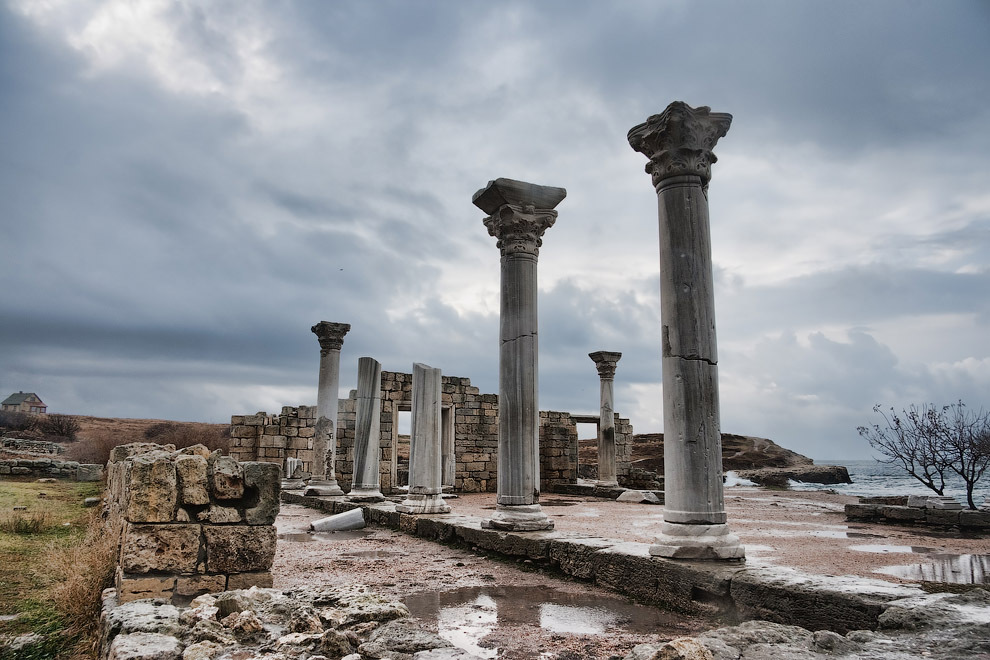
Starting from the 3rd century, various tribes invade the Crimea — the Goths, the Huns, the Bulgarians, the Turks — who destroyed the ancient cities. In the 8th century, the Crimea became Byzantine, part of the peninsula belongs to the Khazar Kaganate.
In the photo: the ruins of Chersonese.
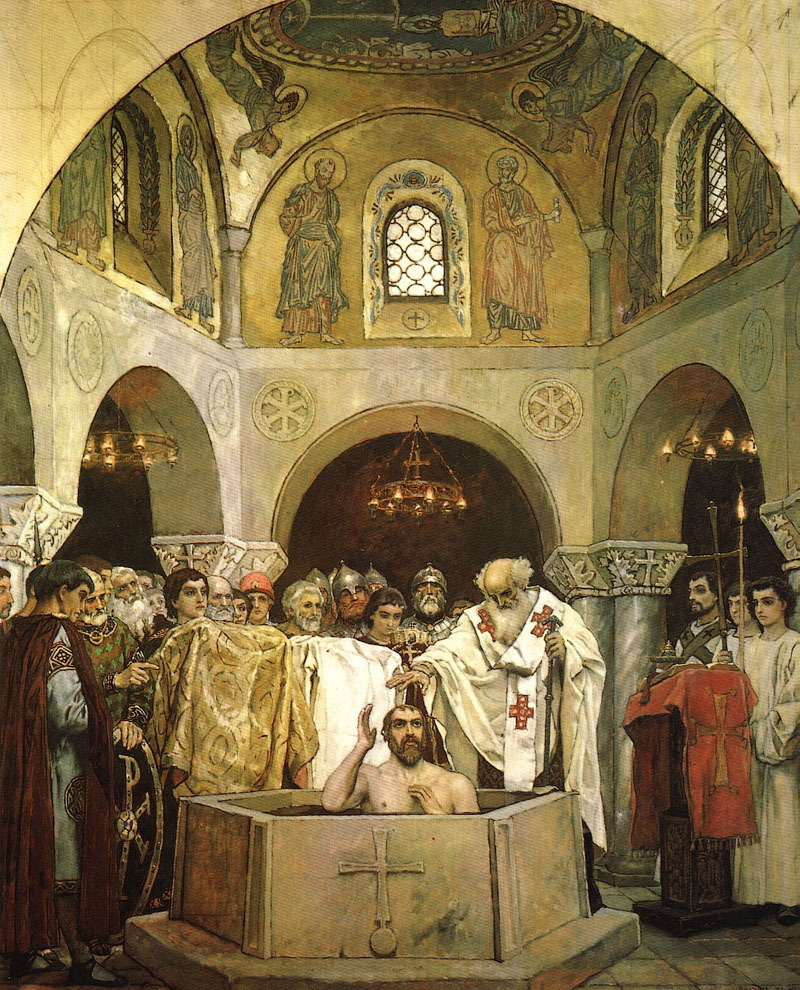
From the 9th century, the Rus penetrated the Crimea, who eventually defeated the Khazars. In 988, Russian Prince Vladimir was baptized here. The territory of the peninsula, the former Khazar, became part of the Russian principality of Tmutarakan.
In the photo: V. Vasnetsov's fresco “The Baptism of Saint Prince Vladimir”, Vladimir Cathedral in Kiev, 1890
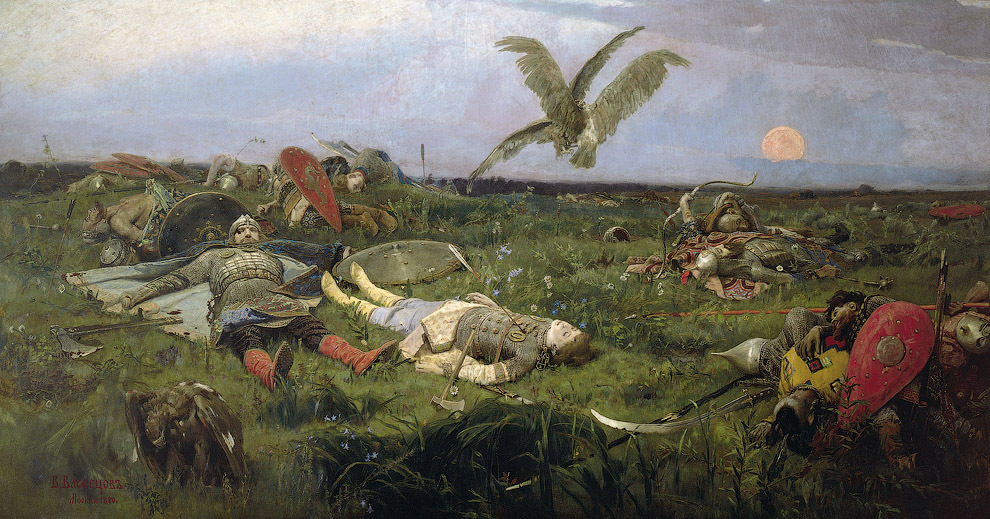
The end of the Russian influence in the Crimea put Polovtsy, which appear here from the 12th century. The modern Crimean-Tatar language, from which there are many toponyms in Crimea (including Crimea, Ayu-Dag, Artek), is a descendant of the Polovtsian language.
In the photo: a picture by V. Vasnetsov “After the slaughter of Igor Svyatoslavich with the Polovtsi”, 1880

In the 13th century the Tatar-Mongols invade Crimea, making it part of the Golden Horde. Under the agreement with her khanami, Genoa receives some coastal cities of the Crimea, and the Genoese build new colonies.
In the photo: the Genoese fortress in Sudak.
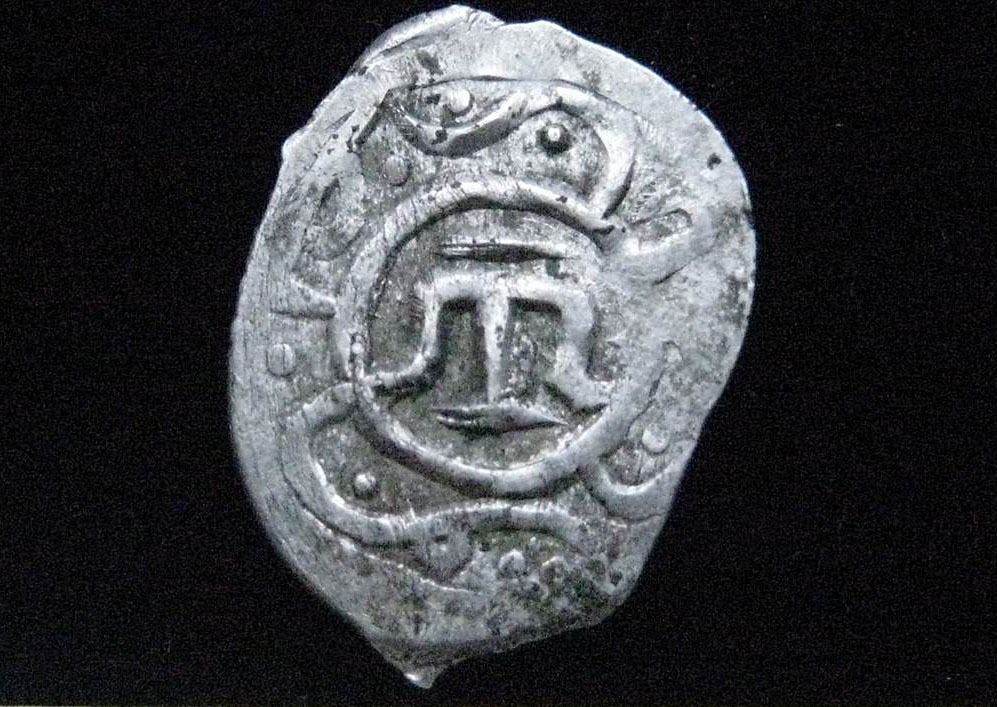
After the collapse of the Golden Horde in 1441, the remnants of the Mongols in the Crimea were Turkized. At this moment, Crimea is divided between the steppe Crimean Khanate, the Byzantine mountain principality of Theodoro and the Genoese colonies on the south coast.
In the summer of 1475, Ottoman Turks landed a large landing force in the Crimea, seizing all Genoese fortresses and Byzantine cities. In 1478, the Crimean Khanate became a protectorate of the Ottoman Empire.
In the photo: the coin of the Crimean Khanate of the 15th century.
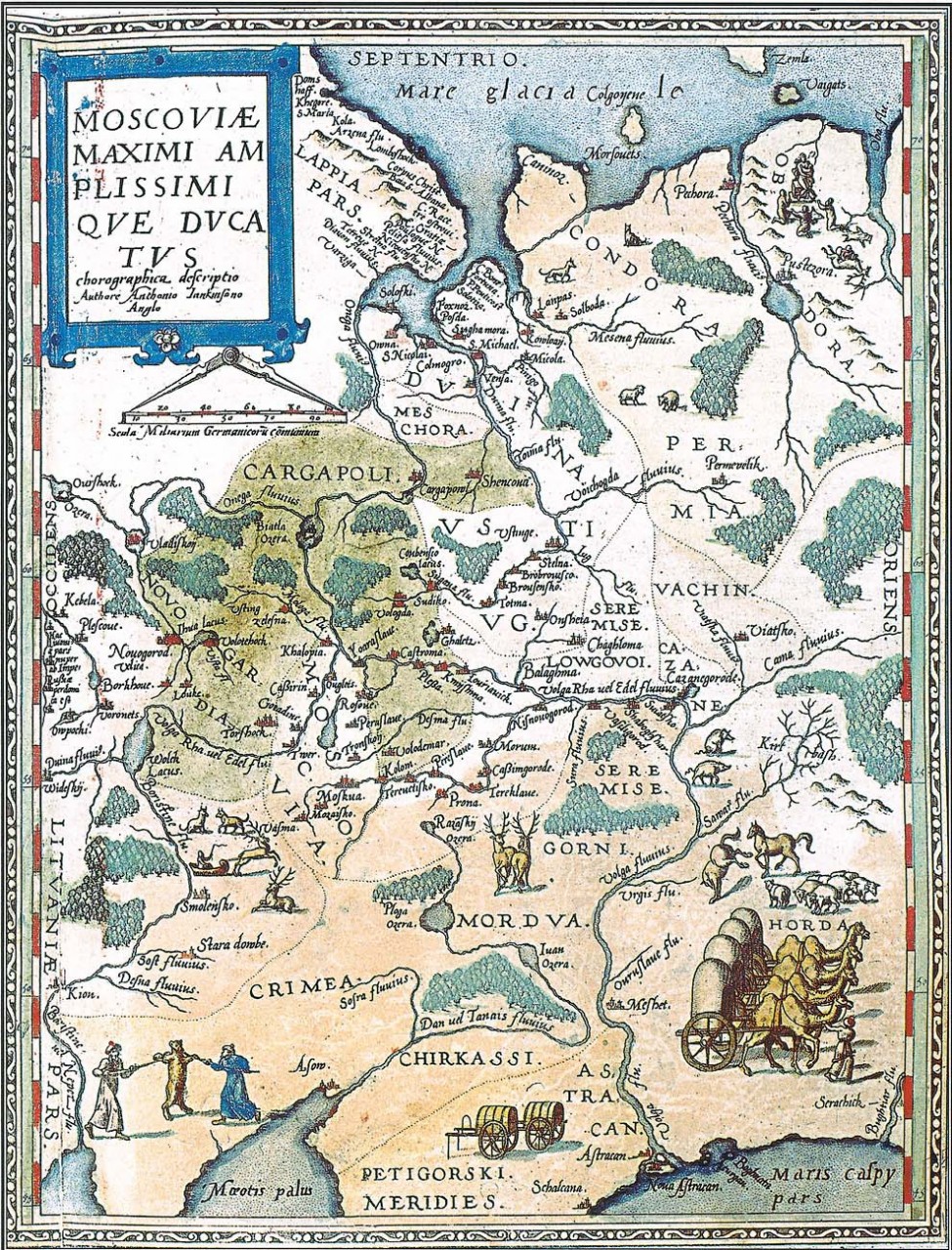
From the end of the 15th century, the Crimean Khanate made constant raids on the Russian state and Poland. The main purpose of the raids - the capture of slaves and their resale in the Turkish markets.
In the photo: Map of 1593. Crimea in the north borders with the Moscow principality, in the west - with the Great Lithuanian. Two Crimean Tartars are bear.
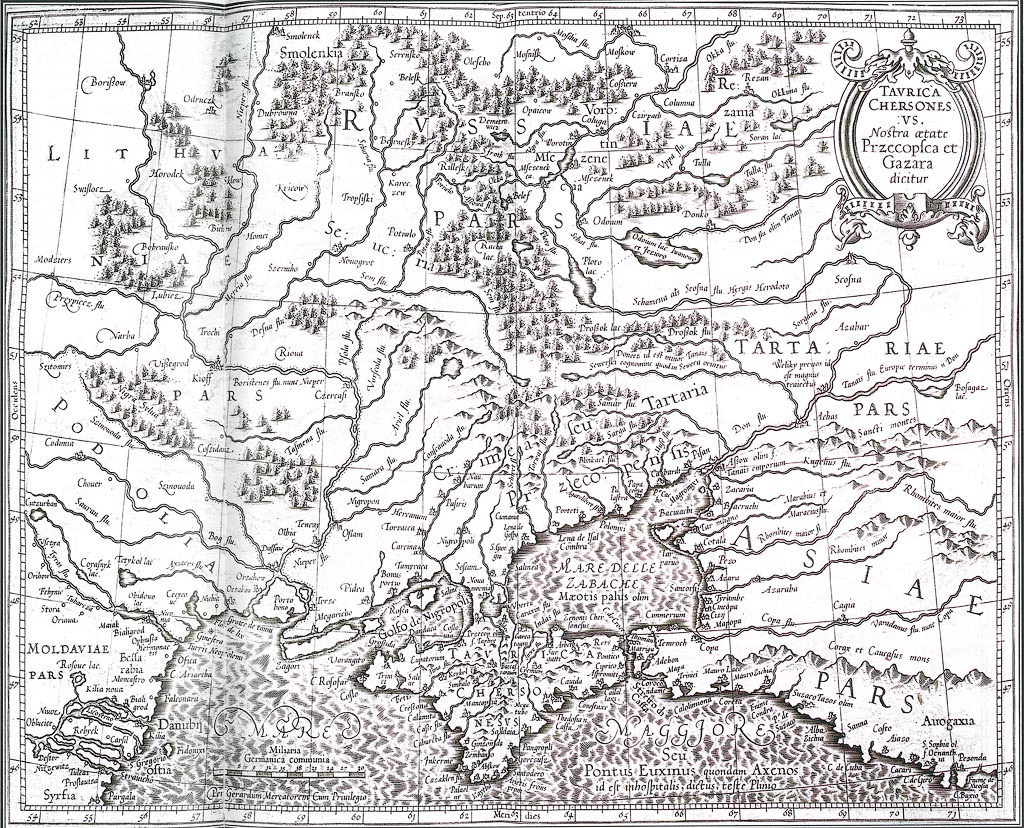
Crimean Khan Devlet I Gerai led constant wars with Ivan IV the Terrible, vainly seeking to restore the independence of Kazan and Astrakhan.
In May 1571, at the head of an army of 40,000 horsemen, the Khan burned Moscow, for which he received the nickname Takht Algan ("who took the throne"). During the raid on Muscovy, as many historians believe, several hundred thousand people died and 50,000 were captured. Ivan IV undertook, like Poland, to pay tribute to the Crimea annually. Payments continued until the end of the 17th century and finally stopped only during the reign of Peter I.
In the photo: Map of the year 1630. In addition to the steppe and foothill parts of the actual Crimea, the khanate occupied lands between the Danube and the Dnieper, the Azov region and most of the present-day Krasnodar region of Russia.
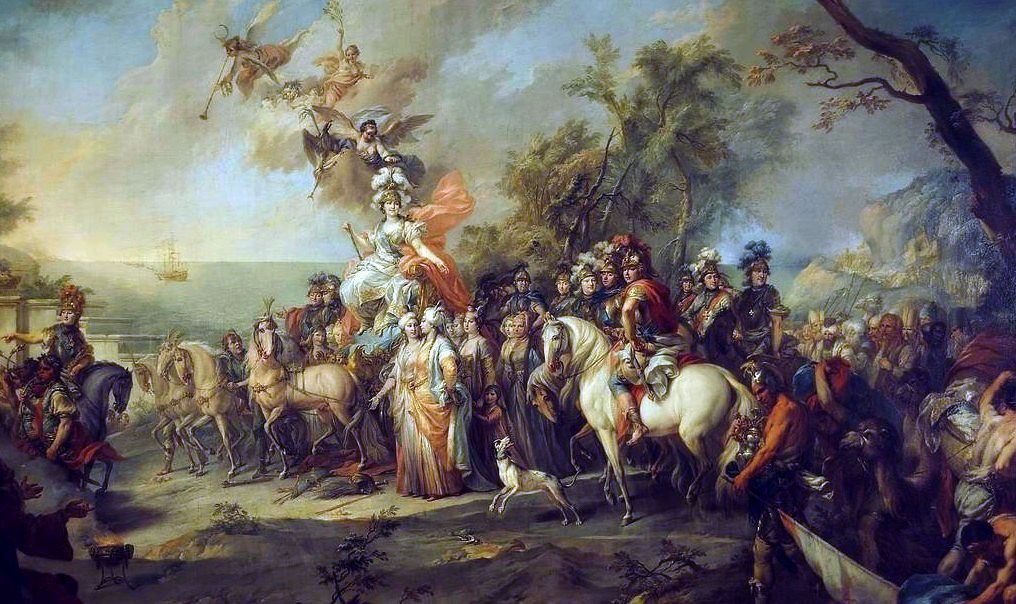
The Russian-Turkish war of 1768-74 put an end to the Ottoman domination, and according to the Kyuchuk-Kaynardzhsky peace treaty of 1774, Crimea gained independence from the Ottoman Empire and passed under the protectorate of Russia. In 1783, the Crimea was incorporated into the Russian Empire.
In the photo: Stefano Torelli's painting “The victory of Catherine II over the Turks”.
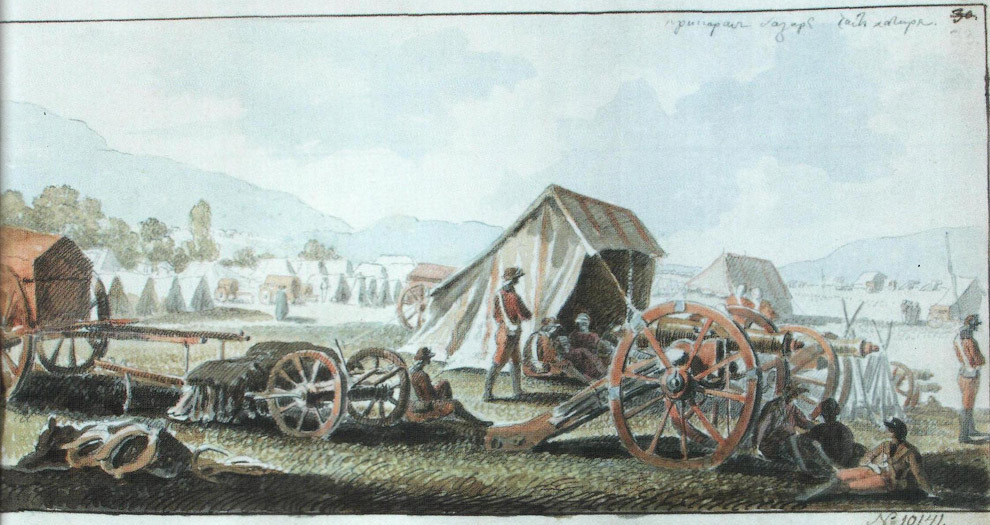
After the annexation of the Crimea to Russia, Russian troops entered its territory, the city of Sevastopol was laid out near the ruins of ancient Chersonesos. The Crimean Khanate was abolished, but its top (over 300 clans) joined the Russian nobility and took part in the local government of the newly created Tauride region.
In the photo: M. Ivanov's painting, “Russian military camp in Crimea”, 1783

In 1787, Empress Catherine made her famous journey to the Crimea. In 1796, the region became part of Novorossiysk province, and in 1802 it was again allocated to an independent administrative unit. At the beginning of the 19th century, viticulture (Magarach) and shipbuilding (Sevastopol) developed in the Crimea, roads were laid. Under Prince Vorontsov, Yalta begins to settle in, and the southern coast of the Crimea turns into a resort.
In the photo: Salute in honor of the arrival of Catherine in the Crimea.

In 1853, the Crimean War broke out, in which Russia fought against three empires: French, British and Ottoman. The fighting unfolded not only on the western and southern borders of Russia, but even in the Barents Sea and Kamchatka. The hottest point was the Crimea.
The heroic defense of Sevastopol lasted almost a year, but in the end the Russians were forced to leave the city. During his defense, the famous Russian generals Kornilov and Nakhimov were killed.
In the photo: Painting V. Nesterenko “Defense of Sevastopol”, 1967
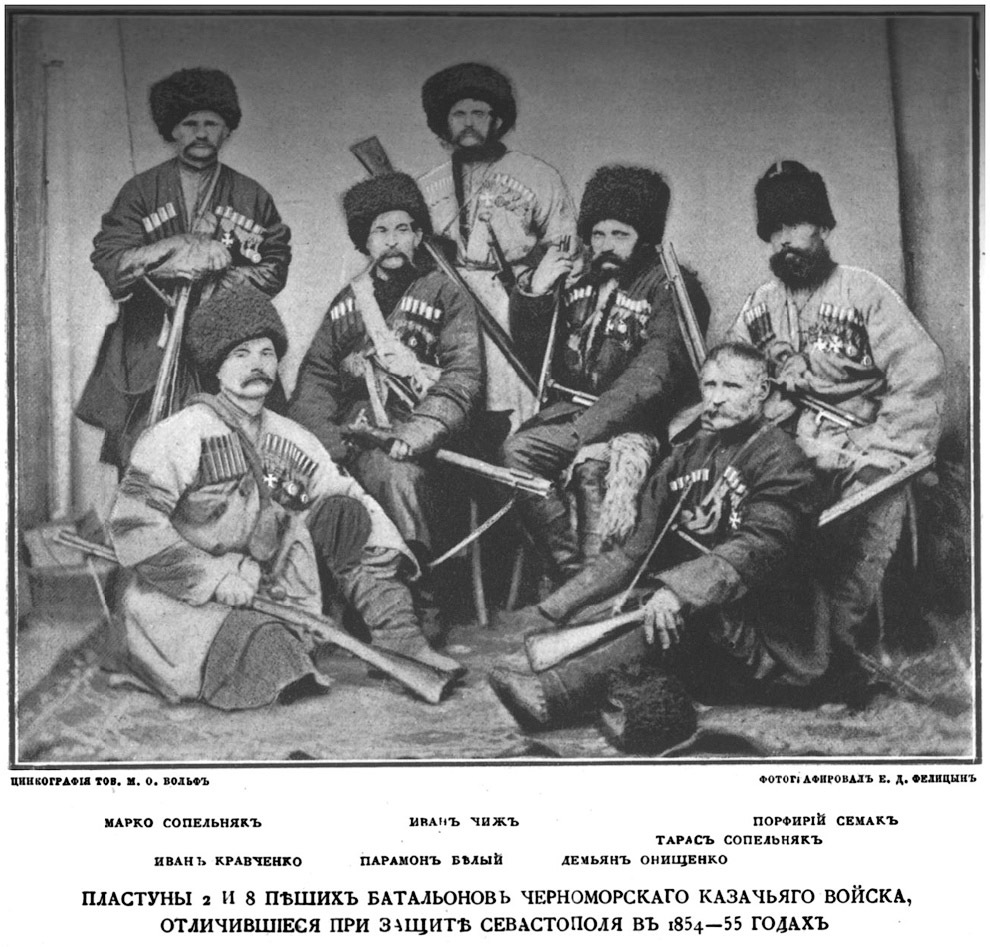
Especially for the participants of the defense of Sevastopol, the medal “For the Protection of Sevastopol” was instituted, which was the first medal in Russian history, which was issued not for taking or winning, but for defense.
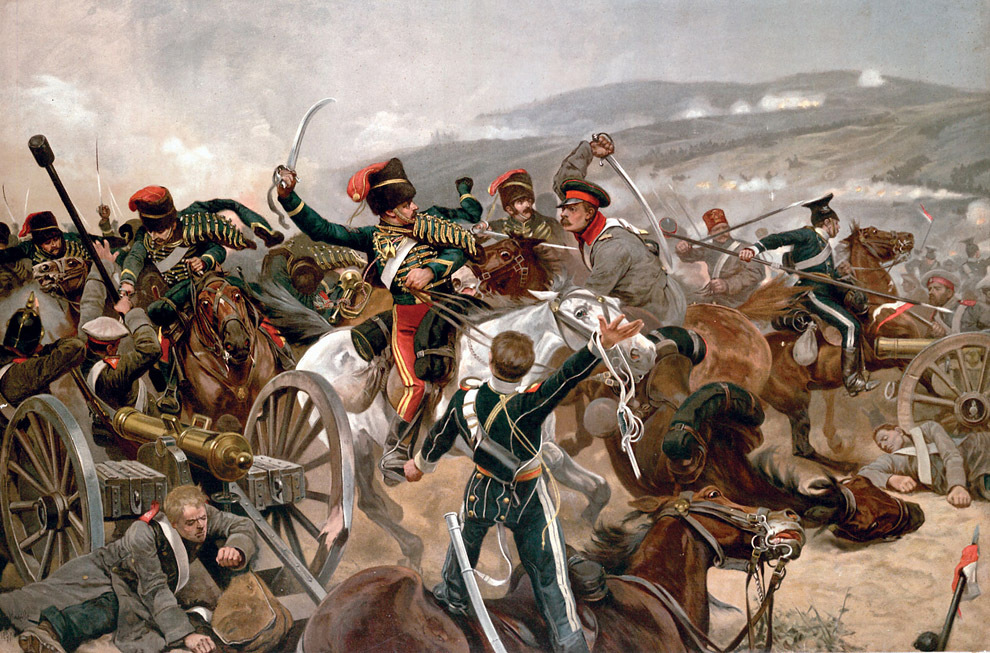
Richard Woodville's The Attack of the Light Cavalry, 1897
“Balaclava Day” forever entered a black date in the military history of England. As a result of the cavalry's attack on the position of the Russians near Balaclava, it almost all fell. Many representatives of the English aristocracy remained on the battlefield, and the phrase “Attack of the light cavalry” became a common noun.
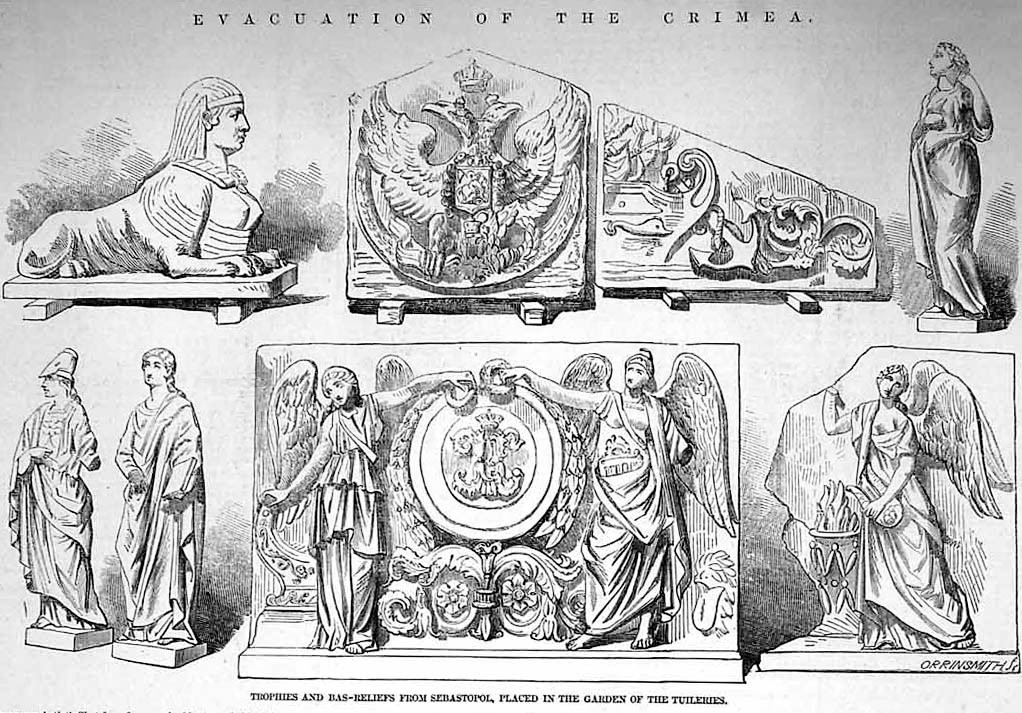
Having seized the Crimea, the Allies began to export local cultural and historical values to their museums.
In the photo: Samples of ancient art, exported by the British from Sevastopol.
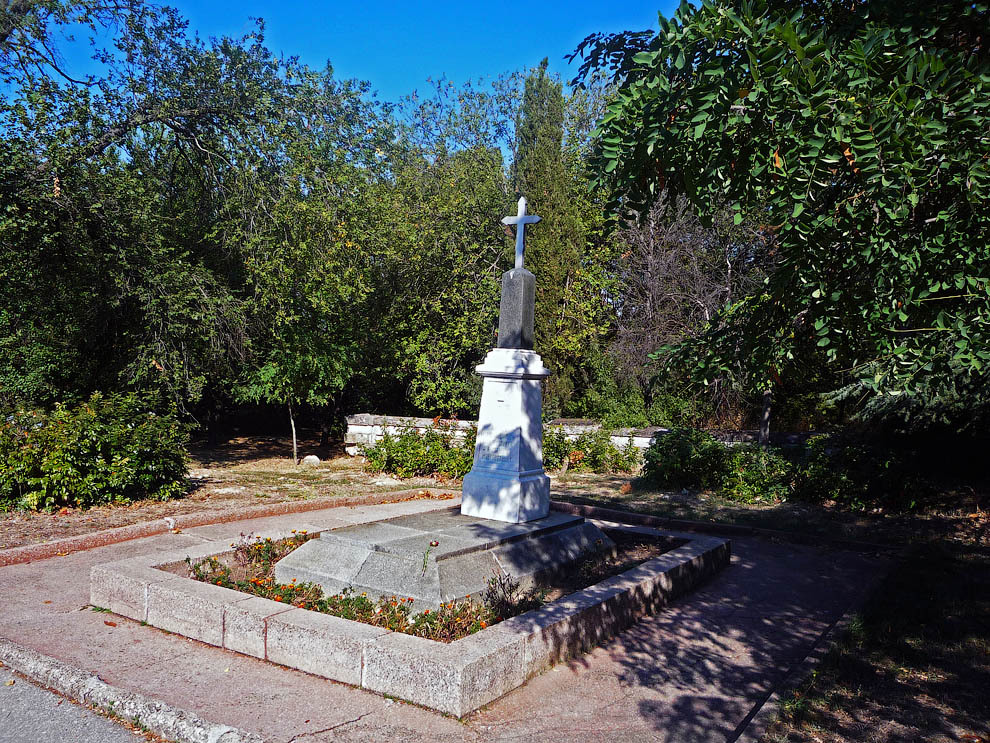
As a result of the Crimean War, Russia lost influence in the Balkans and temporarily lost the Black Sea Fleet, but the Crimea remained Russian.
In the photo: Monument to the fallen Russian and French soldiers on the site of their common mass grave. Malakhov Kurgan, Sevastopol.
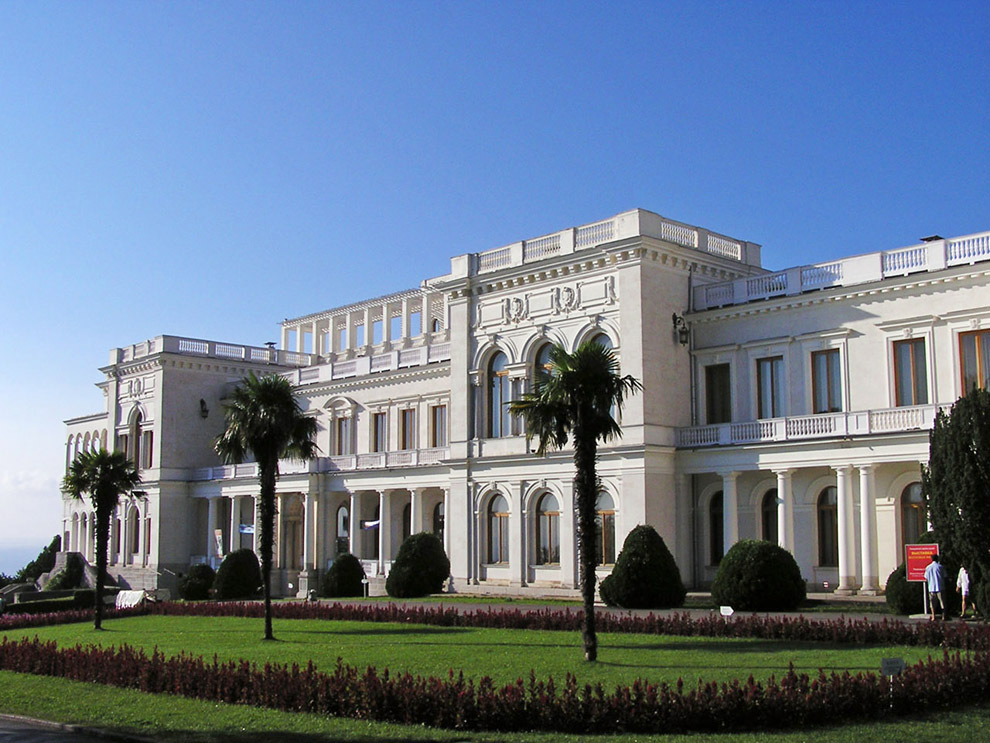
In 1874, Simferopol was connected to the Aleksandrovsky railway. The resort status of Crimea increased after the summer royal residence of Livadia Palace appeared in Livadia.
Population of Crimea in 1897:
russian - 404 thousand
tatars - 197 thousand
ukrainians - 61 thousand
jews - 55 thousand
greeks - 18 thousand
In the photo: Livadia Palace.
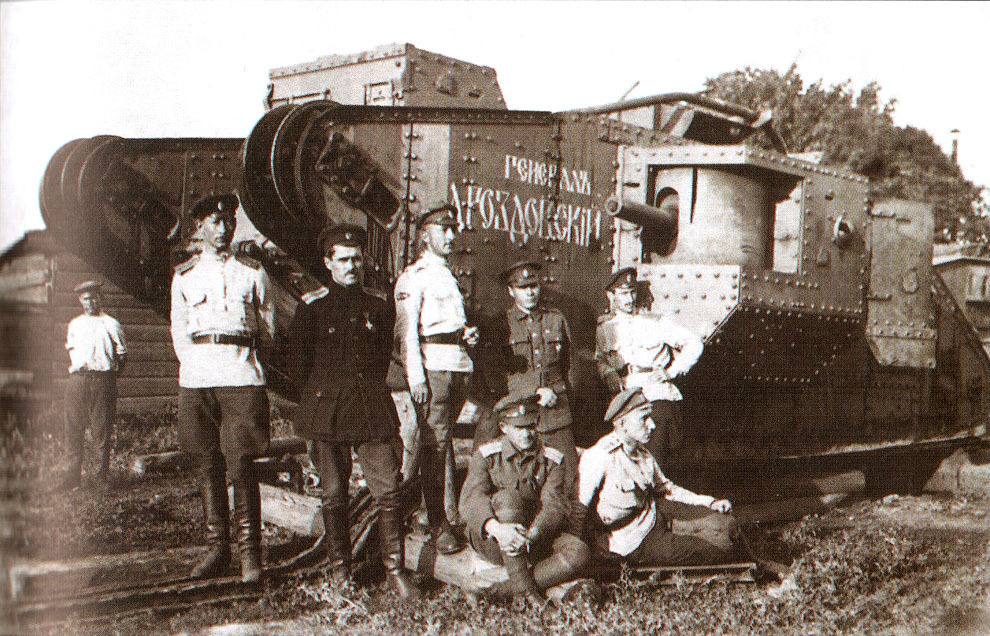
During the Civil War, on the territory of Crimea several "white" and "red" governments replace each other, including the Soviet Socialist Republic of Tavrida, the Crimean Soviet Socialist Republic, etc.
In the photo: The team of the tank "General Drozdovskiy". September 1919

After the defeat of the White movement in October 1920, the Crimea was conquered by the Red Army and incorporated into the RSFSR as an autonomous Crimean Soviet Socialist Republic. In the captured Crimea, the Bolsheviks carried out mass terror, as a result of which from 20 to 120 thousand people died, according to various sources.
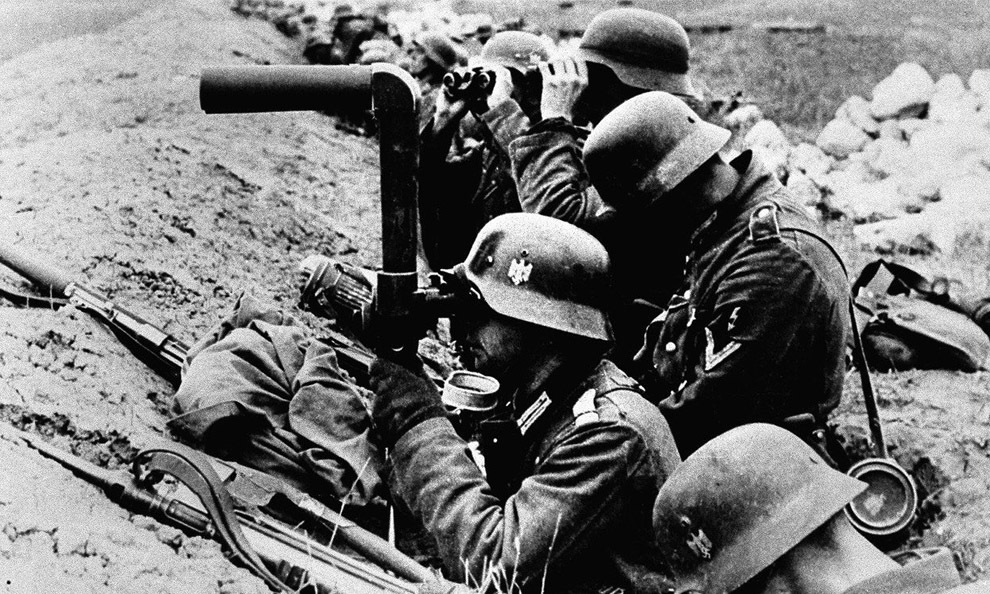
In the fall of 1941, the German occupation of the Crimea began.
"Crimea must be freed from all strangers and settled by the Germans," Hitler declared at a meeting on July 19, 1941, at a meeting. At his suggestion, the Crimea turned into the imperial region of Gotenland (the country is ready). The center of the region, Simferopol, was renamed Gottsburg (the city is ready), and Sevastopol was named Theodorichshafen (the harbor of Theodoric, Ostrogoth King, who lived in 493-526). According to Himmler’s project, Crimea joined directly Germany.
In the photo: German soldiers are observing the Soviet positions from the trench on the Perekop isthmus.

The most fierce battles in the Crimea took place in the region of Sevastopol. The defense of the city lasted about eight months.
In the photo: the ruins of Sevastopol.

At Sevastopol, the first and last time was used super-heavy 800-mm gun "Dora", which weighed more than 1000 tons. It was secretly delivered from Germany and secretly housed in a special shelter, carved in a rock massif in the Bakhchisarai area. The gun went into operation in early June and fired a total of fifty-three 7-ton projectiles.

In early July 1942, Soviet troops were forced to leave Sevastopol, and then the entire peninsula. Their losses amounted to more than 200 thousand people.
For the capture of Sevastopol, the commander of the 11th army, E. von Manstein, was promoted to field marshal.
In the photo: German soldiers in the destroyed Sevastopol.
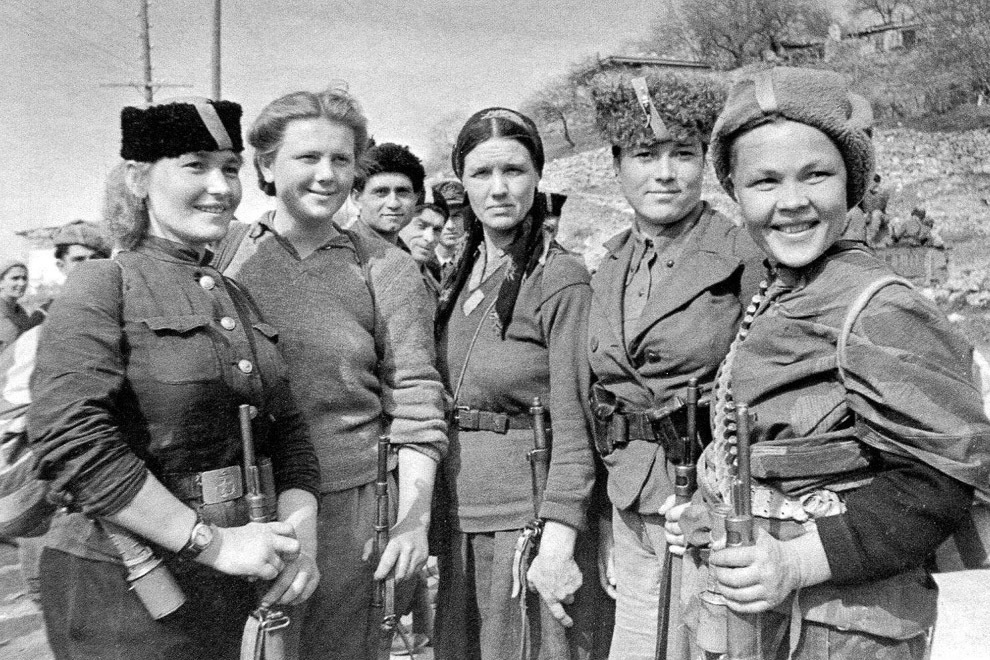
In April 1944, the liberation of the Crimea began. The Crimean operation ended with the complete defeat of the 17th German army, only the irretrievable losses of which during the fighting amounted to more than 120 thousand people.
In the photo: Partisans who participated in the liberation of the Crimea. Village Simeiz on the southern coast of the Crimean peninsula. 1944
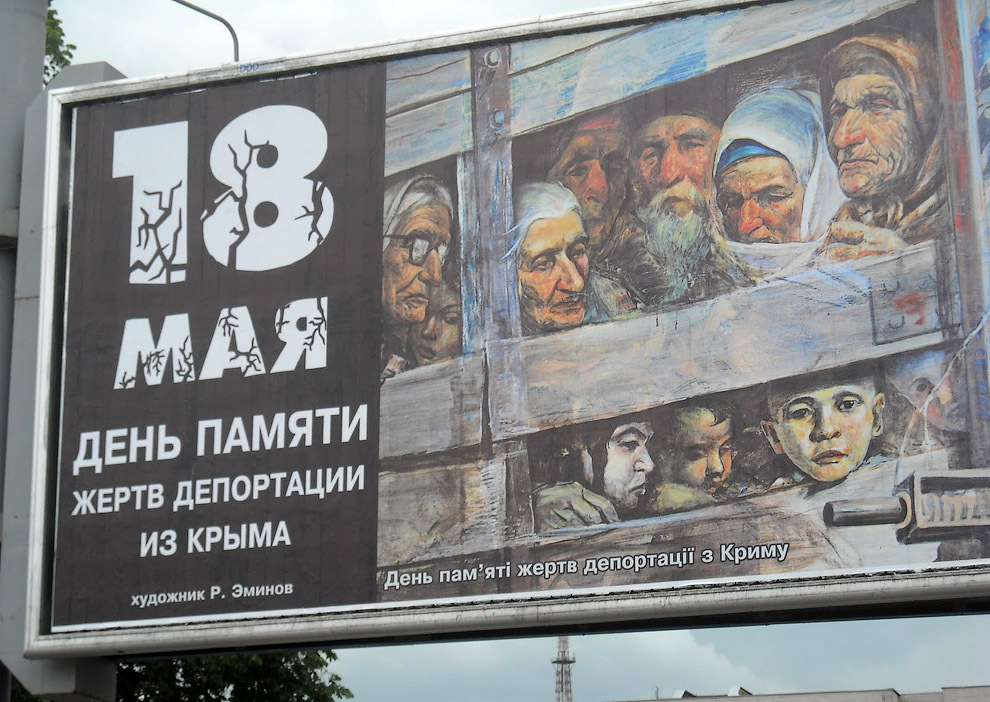
In May 1944, 183 thousand Tatars were deported from the Crimea. Basically - to Uzbekistan. Officially, the reasons for the deportation were the facts of collaborationism and cooperation of a large part of the Crimean Tatar population during the German occupation of the Crimea. 20 thousand Crimean Tatars (every third of the draft age) wore the form of the Third Reich.
Crimean Armenians, Bulgarians and Greeks were also deported.
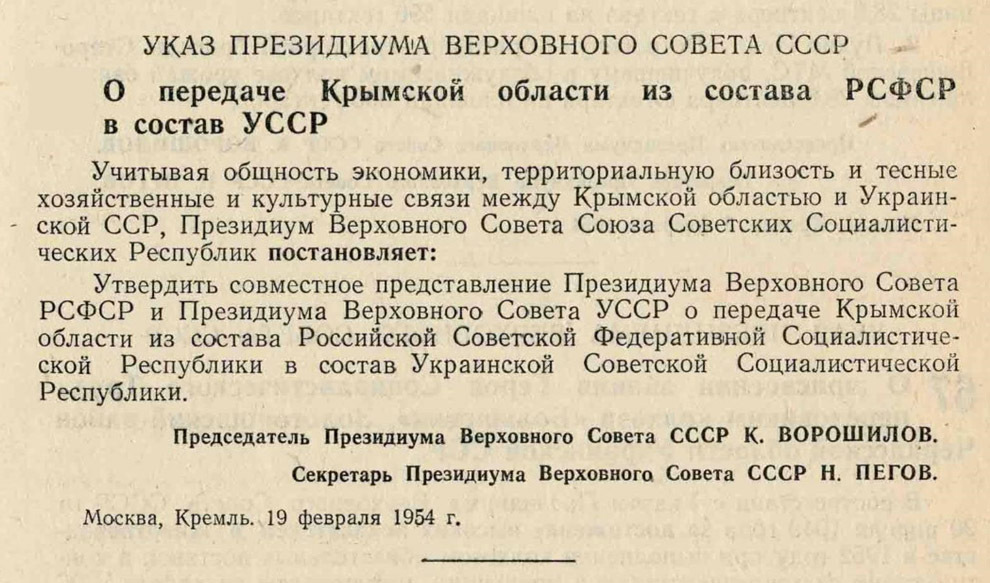
1954 - Crimea is transferred from Russia to Ukraine. Despite the fact that Sevastopol was withdrawn from the Crimea region in 1948, it received a special status in Russia, because of legal inaccuracies, it passed to Ukraine together with the Crimea.
The population of Crimea in 1959: Russians - 858 thousand, Ukrainians - 268 thousand, Jews - 26 thousand

May 6, 1992 adopted the Constitution of the Republic of Crimea and introduced the post of president. According to the memory of the President of Ukraine Kravchuk in an interview given to him by the Ukrainian program, at that time official Kiev was considering the possibility of war with the Crimea.
In March 1995, by the decision of the central Ukrainian authorities, the Constitution of the Republic of Crimea of 1992 was abolished, and the presidency in Crimea was abolished.

February 2014 - as a result of a coup in Kiev, in the Crimea there was a sharp increase in pro-Russian activity.
On February 27, 2014, the Supreme Council of Crimea appointed Sergey Aksyonov head of the Council of Ministers.
On March 11, 2014, the Supreme Council of the Autonomous Republic of Crimea and the Sevastopol City Council adopted the Declaration of Independence of the Autonomous Republic of Crimea and the city of Sevastopol.
On March 17, 2014, as a result of the all-Crimean referendum held on March 16, 2014, the sovereign Republic of Crimea was proclaimed on the basis of the declaration of independence, including the city with the special status of Sevastopol.
The population of the Crimea according to the 2001 census: Russians - 1,450 thousand, Ukrainians - 577 thousand, Tatars - 245 thousand
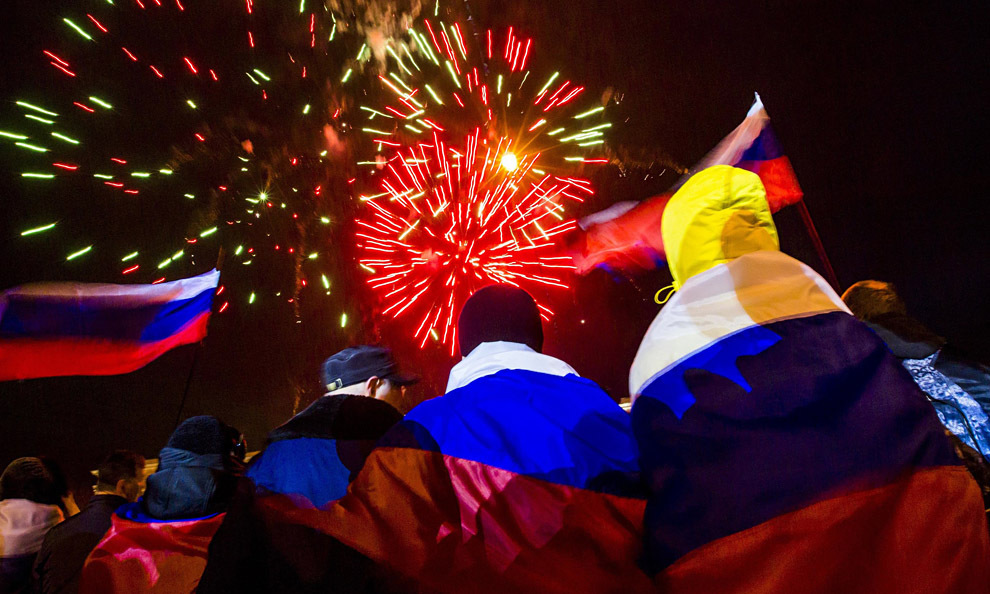
On March 18, 2014, an agreement was signed between the Russian Federation and the Republic of Crimea on the acceptance of the Republic of Crimea into Russia. In accordance with the agreement, new subjects are formed within the Russian Federation - the Republic of Crimea and the federal city of Sevastopol.
In the photo: Crimeans celebrate the news of reunification with Russia.
A year ago, the peninsula of Crimea was part of the state of Ukraine. But after March 16, 2014, he changed the "place of registration" and became part of the Russian Federation. Therefore, the increased interest in how the Crimea developed is highly explainable. The history of the peninsula is very turbulent and rich.
The first inhabitants of the ancient land
The history of the peoples of Crimea has several millennia. On the territory of the peninsula, researchers discovered the remains of ancient people who lived in the Paleolithic era. Near the sites of Kiik-Koba and Staroselie, archaeologists found the bones of people who at that time inhabited this area.
In the first millennium BC, Cimmerians, Taurians and Scythians lived here. By the name of one nationality, this territory, or rather its mountainous and coastal parts, is still called Tavrika, Tavria or Tavrida. The ancient people were engaged in this not very fertile land farming and cattle breeding, as well as hunting and fishing. The world was new, fresh and cloudless.
Greeks, Romans and Goths
But for some ancient states, sunny Crimea turned out to be very attractive in terms of location. The history of the peninsula has Greek echoes. Around the 6th – 5th centuries, the Greeks began to actively settle this territory. They founded entire colonies here, after which the first states appeared. The Greeks brought with them the benefits of civilization: they actively built temples and theaters, stadiums and baths. At this time, shipbuilding begins to develop here. It is with the Greeks that historians associate the development of viticulture. Also, the Greeks planted olive trees here and were collecting oil. We can safely say that with the arrival of the Greeks, the history of the development of the Crimea received a new impetus.
But after several centuries, powerful Rome laid eyes on this territory and captured part of the coast. This capture lasted until the 6th century AD. But the greatest damage to the development of the peninsula was inflicted by those who invaded in the 3rd and 4th centuries and thanks to which the Greek states collapsed. And although the other nations were ready to soon be ousted, the development of the Crimea slowed down very much at that time.
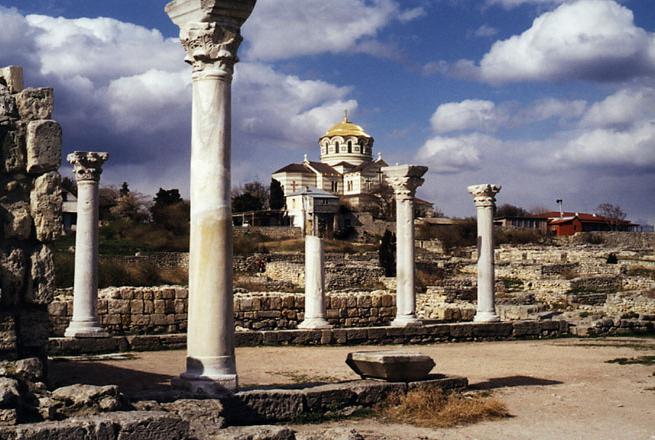
Khazaria and Tmutarakan
Crimea is also called the ancient Khazaria, and in some Russian chronicles this territory is called Tmutarakan. And these are not the figurative names of the place where the Crimea was located. The history of the peninsula left in the speech those toponymic names, which at one time or another called this part of the earth’s land. Starting from the 5th century, the entire Crimea falls under the harsh Byzantine influence. But already in the 7th century, the entire territory of the peninsula (except for Chersonesos) is in a powerful and strong. That is why in Western Europe the name “Khazaria” is found in many manuscripts. But Russia and Khazaria compete all the time, and in 960 the Russian history of the Crimea begins. The kaganate was crushed, and all the Khazar possessions were subordinated to the Old Russian state. Now this territory is called Tmutarakan.
By the way, it was here that the Kiev Prince Vladimir, who occupied Kherson (Korsun), was officially baptized in 988.
Tatar-Mongolian trail

From the 13th century, the history of the annexation of the Crimea once again develops according to the military scenario: the Mongol-Tatars invade the peninsula.
Here the Crimean ulus is formed - one of the divisions of the Golden Horde. After the Golden Horde disintegrated, in 1443 it appeared on the territory of the peninsula. In 1475 it completely fell under the influence of Turkey. It is from here that numerous raids on Polish, Russian and Ukrainian lands are made. And at the end of the 15th century, these invasions became widespread and threatened the integrity of both Muscovy and Poland. Basically, the Turks hunted for cheap labor: they captured people and sold them into slavery in the slave markets of Turkey. One of the reasons for the creation of the Zaporozhian Sich in 1554 was opposition to these seizures.
Russian history
The story of the transfer of Crimea to Russia continues in 1774, when the Kyuchuk-Kaynardzhi peace treaty was concluded. After the Russian-Turkish war of 1768-1774, the almost 300-year reign of the Ottoman Empire came to an end. The Turks abandoned the Crimea. It was at this time that the largest cities of Sevastopol and Simferopol appeared on the peninsula. Crimea is booming, money is invested here, the rapid flowering of industry and commerce begins.
But Turkey did not leave plans to regain this attractive territory and was preparing for a new war. We must pay tribute to the Russian army, which did not allow this to be done. After another war in 1791, the Yassy peace treaty was signed.
The willful decision of Catherine II
So, in fact, the peninsula has now become part of a powerful empire, whose name is Russia. Crimea, whose history consisted of a lot of transitions from hand to hand, needed powerful protection. Acquired southern lands had to be protected, ensuring border security. Empress Catherine II commissioned Prince Potemkin to explore all the advantages and weaknesses of the annexation of the Crimea. In 1782, Potemkin wrote a letter to the empress, in which he insisted on making an important decision. Catherine agrees with his arguments. She understands how important Crimea is for solving domestic state tasks and in the foreign policy perspective.

April 8, 1783 Catherine II publishes a manifesto on the annexation of the Crimea. It was a fateful document. From that moment, from this date on, Russia, the Crimea, the history of the empire and the peninsula intertwined for centuries. According to the Manifesto, all Crimean residents were promised protection of this territory from enemies, preservation of property and faith.
True, the Turks recognized the fact only after eight months. All this time the situation around the peninsula was extremely tense. When the Manifesto was made public, the clergy first took the oath of allegiance to the Russian Empire, and only then the entire population. On the peninsula, solemn festivities were organized, feasts, games and jumps were held, volleys of gun salutes were given into the air. As contemporaries noted, the entire Crimea with joy and jubilation passed into the Russian Empire.
Since then, the Crimea, the history of the peninsula and the way of life of its population have been inextricably linked with all the events that took place in the Russian Empire.
A powerful impetus to development
A brief history of the Crimea after joining the Russian Empire can be described in one word - “flourishing”. Here, industry and agriculture, winemaking, and viticulture are rapidly developing. Fish and salt fields appear in the cities, the people actively develop trade relations.
Since the Crimea is in a very warm and favorable climate, many rich people wanted to get land here. Nobles, members of the royal family, industrialists considered it an honor to establish a family estate on the territory of the peninsula. In the 19th - early 20th century, the rapid flourishing of architecture begins here. Industrial tycoons, royal personages, the elite of Russia build entire palaces here, smash beautiful parks that have survived in the Crimea today. And after the nobility on the peninsula stretched people of art, actors, singers, artists, theatergoers. Crimea becomes the cultural Mecca of the Russian Empire.
Do not forget about the healing climate of the peninsula. Since physicians have proven that the air of Crimea is extremely favorable for the treatment of tuberculosis, a mass pilgrimage has begun here for those who wish to recover from this deadly disease. The Crimea becomes attractive not only for bohemian holidays, but also for health tourism.
Together with the whole country
At the beginning of the 20th century, the peninsula developed along with the whole country. The October Revolution and the subsequent civil war did not pass it. It was from the Crimea (Yalta, Sevastopol, Theodosia) that the last ships and ships departed, on which the Russian intelligentsia left Russia. This was the place where the mass exodus of the White Guards was observed. The country created a new system, and the Crimea did not lag behind.
It was in the 20s of the last century that the Crimea was transformed into an all-union health resort. In 1919, the Bolsheviks adopted the "Decree of the Council of People's Commissars on therapeutic localities of national importance." Crimea is inscribed in it with a red line. A year later, another important document was signed - the decree "On the use of Crimea for the treatment of workers."
Until the war, the territory of the peninsula was used as a resort for tuberculosis. In Yalta in 1922, even the specialized Institute of Tuberculosis was opened. Funding was at the proper level, and soon this scientific research institute becomes the main center of the country for pulmonary surgery.
Epochal Crimean Conference
During the Great Patriotic War, the peninsula became an arena of massive fighting. Here they fought on land and at sea, in the air and in the mountains. Two cities - Kerch and Sevastopol - received the title of hero cities for a significant contribution to the victory over fascism. 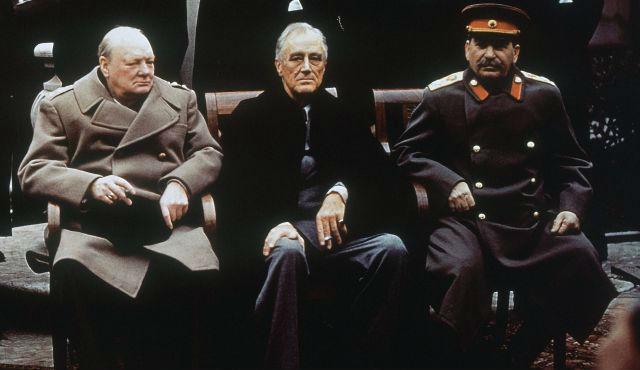
True, not all nations inhabiting the multinational Crimea fought on the side of the Soviet Army. Some representatives frankly supported the invaders. That is why in 1944, Stalin issued a decree on the deportation of the Crimean Tatar people outside the Crimea. Hundreds of trains in one day took an entire nation to Central Asia.
Crimea entered world history due to the fact that in February 1945 the Yalta Conference was held in the Livadia Palace. The leaders of the three superpowers - Stalin (USSR), Roosevelt (USA) and Churchill (Great Britain) - signed important international documents in the Crimea, according to which the world order for the long post-war decades was determined.
Crimea - Ukrainian
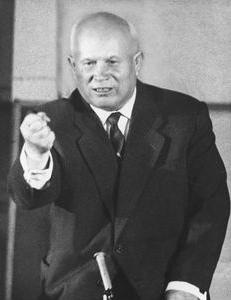
In 1954, a new milestone begins. The Soviet leadership decides to transfer the Ukrainian SSR Crimea. The history of the peninsula begins to develop in a new scenario. The initiative came personally from the then head of the CPSU, Nikita Khrushchev.
This was done to a round date: that year the country celebrated the 300th anniversary of the Pereyaslav Rada. To commemorate this historic date and demonstrate that the Russian and Ukrainian peoples are one, Crimea was turned over to the Ukrainian SSR. And now it has become regarded as a whole and part from the whole pair "Ukraine-Crimea". The history of the peninsula begins in the modern annals from a clean slate.
Whether this decision was economically justified, whether it was worth taking such a step then — at that time such questions did not even arise. Since the Soviet Union was one, no one gave particular importance to whether the Crimea would be part of the RSFSR or the Ukrainian SSR.
Autonomy within Ukraine
When was formed independent Ukrainian state, Crimea received the status of autonomy. In September 1991, the Declaration of State Sovereignty of the Republic was adopted. And on December 1, 1991, a referendum was held, in which 54% of the inhabitants of Crimea supported the independence of Ukraine. In May next year The Constitution of the Republic of Crimea was adopted, and in February 1994, Crimeans elected the first President of the Republic of Crimea. They became Yuri Meshkov.
It was during the years of perestroika that disputes arose more and more often that Khrushchev had illegally transferred Crimea to Ukraine. Pro-Russian sentiments on the peninsula were very strong. Therefore, as soon as the opportunity arose, the Crimea returned to Russia again.
The fateful March 2014
While in Ukraine at the end of 2013 - the beginning of 2014, a large-scale state crisis began to grow, in the Crimea, voices were voicing that the peninsula needed to be returned to Russia. On the night of February 26 to 27, unidentified people raised a Russian flag over the building of the Supreme Council of Crimea. 
The Supreme Council of Crimea and the Sevastopol City Council adopt a declaration of independence of the Crimea. At the same time, the idea was voiced to hold a all-Crimean referendum. Initially, he was appointed to March 31, but then moved two weeks earlier - on March 16. The results of the Crimean referendum turned out to be impressive: 96.6% of voters supported the accession of Crimea to Russia. The overall level of support for this decision by the population of the Crimean Peninsula was 81.3%.
The modern history of Crimea continues to take shape before our eyes. Not all countries have recognized the status of the Crimea. But Crimeans live with faith in a bright future.
"Big", like everyone else, constantly monitors the news from the Crimea. And in order to perceive them more clearly, I decided to ask about the history of the peninsula. The result is below.
Since ancient times, Crimea is known as Tavrika. The name came from the name of the oldest tribes of the Taurians who inhabited the southern part of the Crimea. The Cimmerians come to replace the Taurus, later the Cimmerians confound the Scythians, and in the 7th century BC, the Greek colonization of the Crimea began. Greeks replaces Rome, but to live quietly in the shadow of the wings of the Roman eagle can not long. In 370, the hordes of the Huns fell on the lands of Taurida. From Panticapaeum, Chersonesos and many other cities remain the ruins. And the Huns rush further to Europe, where they will later be the cause of the death of the great Roman Empire. Then the Byzantine-Khazar squabbles for influence over the peninsula begin, which end - correctly, by the Slavs.
Slavs appear on the Crimean scene in the 9th century and immediately actively intervene in the “Crimean small party”. The Kiev prince Svyatoslav Igorevich smashes the Khazars and declares the Kiev protectorate. Kherson, bending under the Khazars (in Slavic letters, it is called Korsun), is also a Kiev prince, but already Vladimir, in 988-989 he cuts out and gives fire. That, however, does not prevent him from immediately accepting the Christian faith.
In the XIII century, the Golden Horde invaded Tavrika, they are also Tatar-Mongols, they are also Turkic tribes. Golden Horde does not violate the tradition: fly by fire and sword ... and settle on the peninsula.
They bring the modern name - Crimea. The Golden Horde captures the city of Solkhat, through which the trade route from Perekop to Cafu passes. New owners fortify the city with walls and a wide moat. And they give the settlement a new name, Kyrym, which means “moat” in Russian. Over time, the name of the city is transmitted to the entire peninsula. Today, on the place of Kıryma is a small cozy resort town with a population of about ten thousand people. It is called Old Crimea.
Simultaneously with the Golden Horde in the XIII century, on the southern coast of the Crimea now first appear Venetians, and then the Genoese. Their main stronghold in the Crimea is Kafa (today Theodosia).
Trade goes wide: the Genoese export cereals. Crops in the Crimea are so abundant that sometimes they are simply left in the steppe, not being able to take out.
The second thriving business on the peninsula is the slave trade. Purchase and sale of people in the Black Sea Italians control. The main consumers are the Mamluk Egypt and the markets of the West. People are trafficked with such fervor that the Venetian government has to ban shipowners from transporting more than three slaves per crew member to Venice or any other place. Supply exceeds demand.
According to Russian historians, for 250 years the Crimean khans stole and resold to slavery up to three (!) Million inhabitants of Russia and its suburbs.
In the spring of 1475, a Turkish fleet appeared off the coast of Kafa. Capturing one by one coastal fortress, he puts an end to the Genoese sovereignty in the Crimea.
Turks openly claim the south-western borders of Russia. Grigory Potemkin writes to Catherine II about the need to protect the borders of the Russian Empire and the Russian inhabitants of Crimea from slavery and oppression. In the war of 1768-1774, the Turkish army and navy were defeated, the Kyuchuk-Kaynardzhi peace treaty was concluded. Kerch goes to Russia with the fortress Yeni-Kale, the fortress of Azov and Kinburn, Russian merchant ships have the opportunity to freely sail on the Black Sea. Crimea becomes Russian. The majority of the Muslim population leaves the peninsula after moving to Turkey.
To revive the peninsula, Prince Potemkin, appointed by the governor of Taurida, resettled serfs and retired soldiers from neighboring areas. The economy of the Crimea is developing rapidly, gardens, vineyards, tobacco plantations on the southern coast and in the mountainous part are broken. On the shore of an excellent natural harbor, the city of Sevastopol is laid as the base of the Black Sea Fleet. And in the small town of Ak-Mosque Simferopol is being built, which becomes the center of the Tauride province.
Another attempt to seize the Crimea from Russia is made in 1787. To eliminate the Russian naval base, England, Sweden and Prussia promise military aid and loans to Istanbul. But Turkey suffers a crushing defeat. The war ends with the conclusion of the Yassky peace treaty in 1791, according to which the Crimea and Novorossia (southeast of Ukraine) are permanently assigned to Russia
After the annexation of the Crimea, Russia becomes the grain-producing power. Southern steppes are plowing open and bring huge profits. The annexation of the Crimea at the end of the 18th century becomes one of the greatest geopolitical victories of Russia in its entire history. Only Petrovsky’s breakthrough to the northern seas through the “window to Europe” cut through in the Baltic could be compared with it.
The second attempt to seize Sevastopol and transfer the Crimea to Turkey was made by the European powers in the middle of the 19th century. After Admiral Nakhimov destroyed the entire Turkish fleet, Britain and France, with the participation of Sardinia and Turkey, declared war on Russia. In 1854, Western European colonial troops began to invade the Crimea. From this moment on, the name of Sevastopol becomes the property of not only Russian, but also world history. During the 11 months of the siege, Anglo-French forces bombard Sevastopol with about 400 million artillery shells and 28.5 million rifle bullets. This amount of metal would be enough for several military campaigns in Europe.
In 1856, Russia loses the Crimean War to the allies. However, the victory can be called Pyrrhic - the losses of the Allies are so great: in Paris, in memory of the events of those days, one of the main streets was called Sevastopol Boulevard. And the British Guardsmen and today wear stripes with the names of the Crimean cities, where their predecessors remained forever.
At the beginning of the 20th century, Crimea belongs to the Tauride province. Soviet power is established in Crimea later than in the center of Russia. Reliance of the Bolsheviks in the Crimea - Sevastopol. Crimea was proclaimed by the Soviet Socialist Republic of Tavrida. But for the year Crimea becomes first Germanic, and then French-English. The Crimean Autonomous Soviet Socialist Republic within the RSFSR is finally declared in the fall of 1921 after the victory over General Denikin.
During the Great Patriotic War, Crimeans courageously fight the enemy. The 250 days of defense of Sevastopol, the Kerch-Feodosiya landing operation, the Tierra del Fuego Eltigen, the feat of the underground fighters and partisans become the pages of the military chronicle. For the resilience and courage of the defenders of Sevastopol and Kerch are awarded the title "Hero City".
On the morning of May 8, 1944, the deportation of Crimean Tatars from the Crimea begins. In the 70 echelons, 188,626 people were exported: in the majority - women, children and the elderly. Special orders were issued on the fronts to dismiss the Crimean Tatars from the army. They are also sent to a special settlement. Most of them were evicted to Uzbekistan from adjacent areas of Kazakhstan and Tajikistan. Small groups were sent to the Mari Autonomous Soviet Socialist Republic, to the Urals and to the Kostroma region. The fate of the Crimean Tatars was soon divided by 11 thousand Armenians, more than 12 thousand Bulgarians and 14.5 thousand Greeks. Together with them, Turks, Kurds, Persians and Gypsies living in Crimea were sent to a special settlement. In total, more than 300 thousand inhabitants were sent from the Crimea.
On the road and in the first years of deportation, over 40% of the deportees die.
The official reason for the deportation is cooperation with the occupiers. Twenty years later, in 1967, the wholesale accusation of all the Crimean Tatars and other nationalities of the peninsula in collaboration with the fascists will be considered unfounded.
February 19, 1954 issued a decree on the transfer of the Crimean region of Ukraine. Traditionally it is said that Khrushchev, on behalf of Russia, made Ukraine a royal gift. In fact, the decree is signed by Voroshilov, Chairman of the Presidium of the USSR Supreme Soviet, and there is no Khrushchev’s signature on the transfer of Crimea to Ukraine.
It is believed that the origins of such a solution to the Crimean problem should be sought in the difficult economic situation of the peninsula. According to statistics, during the war, the population of Crimea decreased by half, and after the deportation of the Crimean Tatars it is inhabited only by 500 thousand people. On the peninsula ruin and famine reign. Thousands of complaints to the Center and lead to the fact that the Soviet leader decides to secretly visit the peninsula in the deep autumn of 1953. Crimean reality is shocking the first secretary.
In the situation with the transfer of the Crimea to Ukraine - the main legal snag on which the Kremlin is currently pressing. At that time, the Ukrainian SSR, as the victor country in World War II, was a subject of international law. And international law requires that any, even minimally significant, transfer of state sovereignty to the territory be recorded in the form of an international treaty. The question remains: is it possible to call such a decision of the Presidium of the USSR Supreme Soviet? With Sevastopol, and even harder. The city in 1948 was removed from the subordination of the Crimean region and transferred to the Center, that is, directly to Moscow.
But we must also not forget that with a series of treaties with Russia, the status of Crimea is clearly defined as the territory of Ukraine. And Russia is one of the guarantors of the integrity of the territory of Ukraine. Rather, spoke.
What will happen now - is unknown. The “big one” holds the opinion: the main thing is that there should be no war.

